-
Programming
please make it stop
Thursday December 4, 2025😮💨
pattern = re.compile(r""" ^ # The beginning of my hubris I \s+ may \s+ be \s+ # A moment of hope done \s+ with \s+ # Freedom! Sweet freedom! regex # The beast I sought to escape \s+ but \s+ # Plot twist incoming... regex # It's back. It was always back. \s+ is \s+ not \s+ # The cruel truth done \s+ with \s+ # It has unfinished business me # I am the business $ # There is no escape, only EOL """, re.VERBOSE) -
Trying Vivaldi as My Other Browser
Sunday November 30, 2025
I use two to three browsers daily for different tasks. My default is the Zen Browser because as a former Arc user, Zen hits the sweet spot for features and usability.
However, I still need a secondary (and sometimes tertiary) browser for various workflows, which led me to give Vivaldi a proper try.
A Brief History of Vivaldi
Vivaldi was founded in December 2013 by Jon von Tetzchner and Tatsuki Tomita.
If that first name sounds familiar, it’s because von Tetzchner co-founded Opera Software and served as its CEO until 2010, which was 5 years before Opera was sold to the current owners, a Chinese-backed group of investors.
A number of former Opera employees joined von Tetzchner at Vivaldi Technologies to build what they had wanted to build all along, a feature full browser not controlled by outside investment.
The first technical preview launched in January 2015, with version 1.0 releasing in April 2016. Today, Vivaldi is an independent, employee-owned company headquartered in Oslo, Norway, serving approximately 3.8 million active users.
What I Like
The themes are genuinely great. I’m currently using one called “Pokemon Room,” but there’s a whole library of community-created themes to choose from. It’s a small thing, but having a browser that looks good makes the daily grind a little more pleasant.
You can disable features you won’t use. Vivaldi has a built-in mail client and calendar, but since I’m not switching away from my current setup, I appreciated being able to turn those off entirely rather than having them clutter the interface.
Solid defaults for power users. Tabs automatically hibernate to save RAM—something I’d normally have to install an extension for. Vertical tabs are easy to set up. Built-in setting sync works well, and they encrypt your settings locally so the data can’t be read on their end. I wish more companies did this.
Access to Chrome Features Without Chrome Vivaldi is Chromium-based, which means full Chrome Web Store extension support and the ability to install progressive web apps. If you’ve been wanting to ditch Chrome but still need that ecosystem compatibility, it is a solid pick. Also FWIW, I’m not subscribed to Perplexity or OpenAI so their Chromium forks do not interest me.
The Referral Link Situation
Here’s where things get a bit murky. Vivaldi is a free browser, and they need to make money somehow. The company sustains operations through revenue-sharing partnerships with search engines like DuckDuckGo and Ecosia, along with bookmark affiliates like Booking.com. Fair enough.
But there are a couple of things you should know if you install Vivaldi:
Delete the default bookmarks. The bookmarks that come pre-installed contain tracking referral links. After importing your own bookmarks, go through and remove all the ones Vivaldi added.
Disable Direct Match. This one took me a while to figure out. There’s a feature called “Direct Match” that hijacks your address bar and inserts referral links into your dropdown suggestions, prioritizing them over your actual history and bookmarks. It’s not a bookmark you can delete, it’s baked into the browser.
To disable it: Settings → Address Bar → Address Field Suggestions → uncheck “Direct Match”
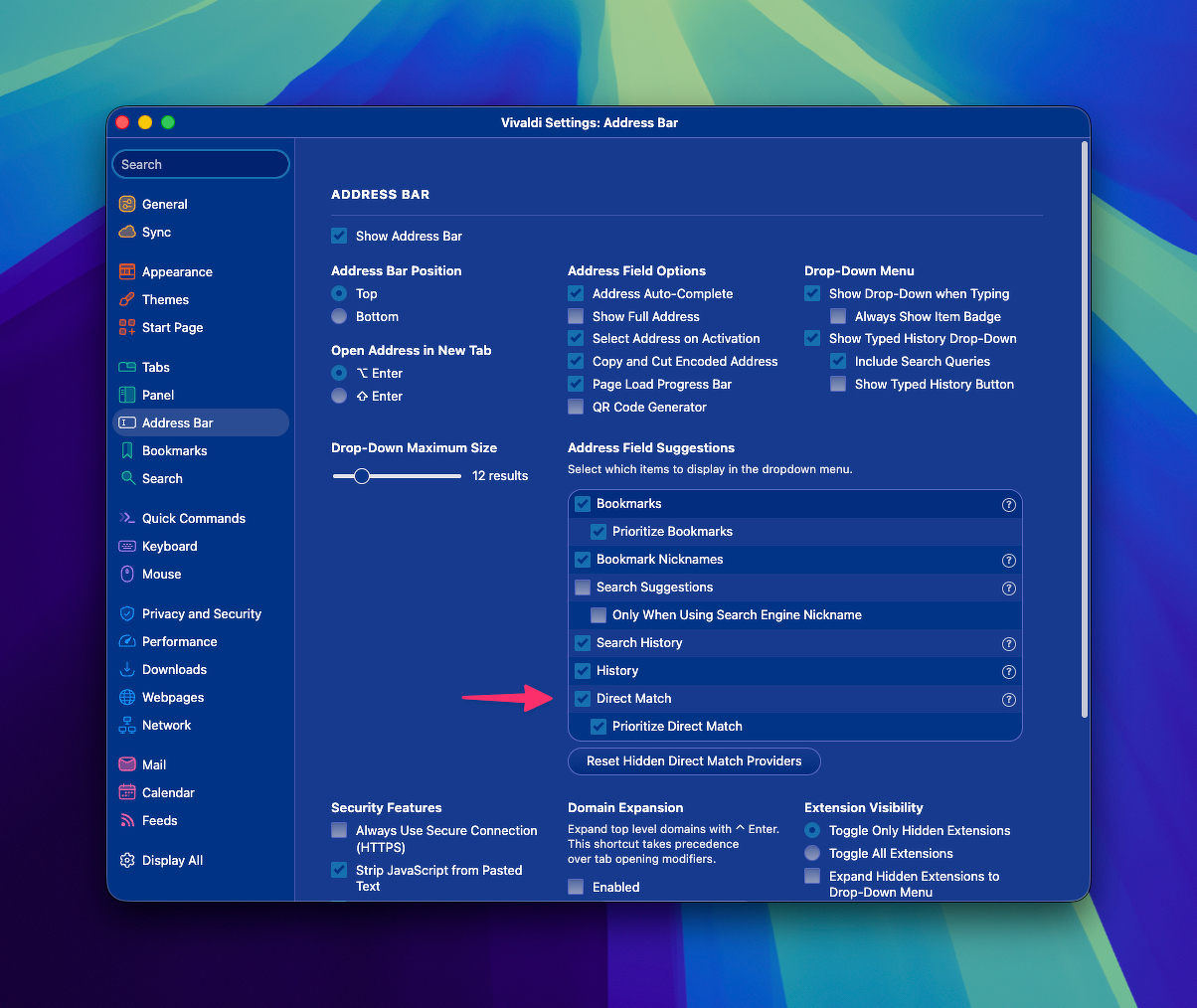
I’m sure most users haven’t done this because it’s not obvious what’s happening. I’d prefer if this were opt-in rather than something you have to hunt down and disable.
Before Disabling Direct Match

After Disabling Direct Match

Donate to support is how it should be
Vivaldi is a solid browser with genuine respect for customization and user control. The team’s Opera pedigree shows in the thoughtful features. You can donate directly to support their work, Vivaldi Donations.
The referral link integration feels a bit sneaky, even if I understand why it exists. If you’re aware of them and disable Direct Match upfront, Vivaldi makes for a capable browser (or secondary in my case).
-
Tuesday November 18, 2025
Lil Bro out here resolving merge conflicts on their own 😘
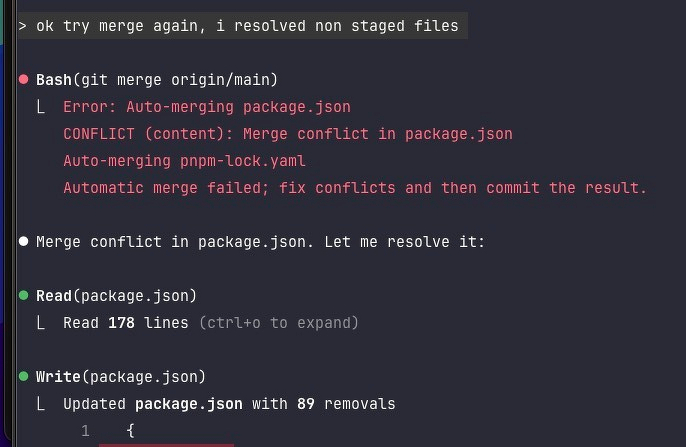
-
Thursday November 6, 2025
Rust I wrote for my Link in Bio site. I think Link in Bio is my favorite thing to build for learning a language or new library combination. Checkout Github Templates setting for base sites that you can iterate on.
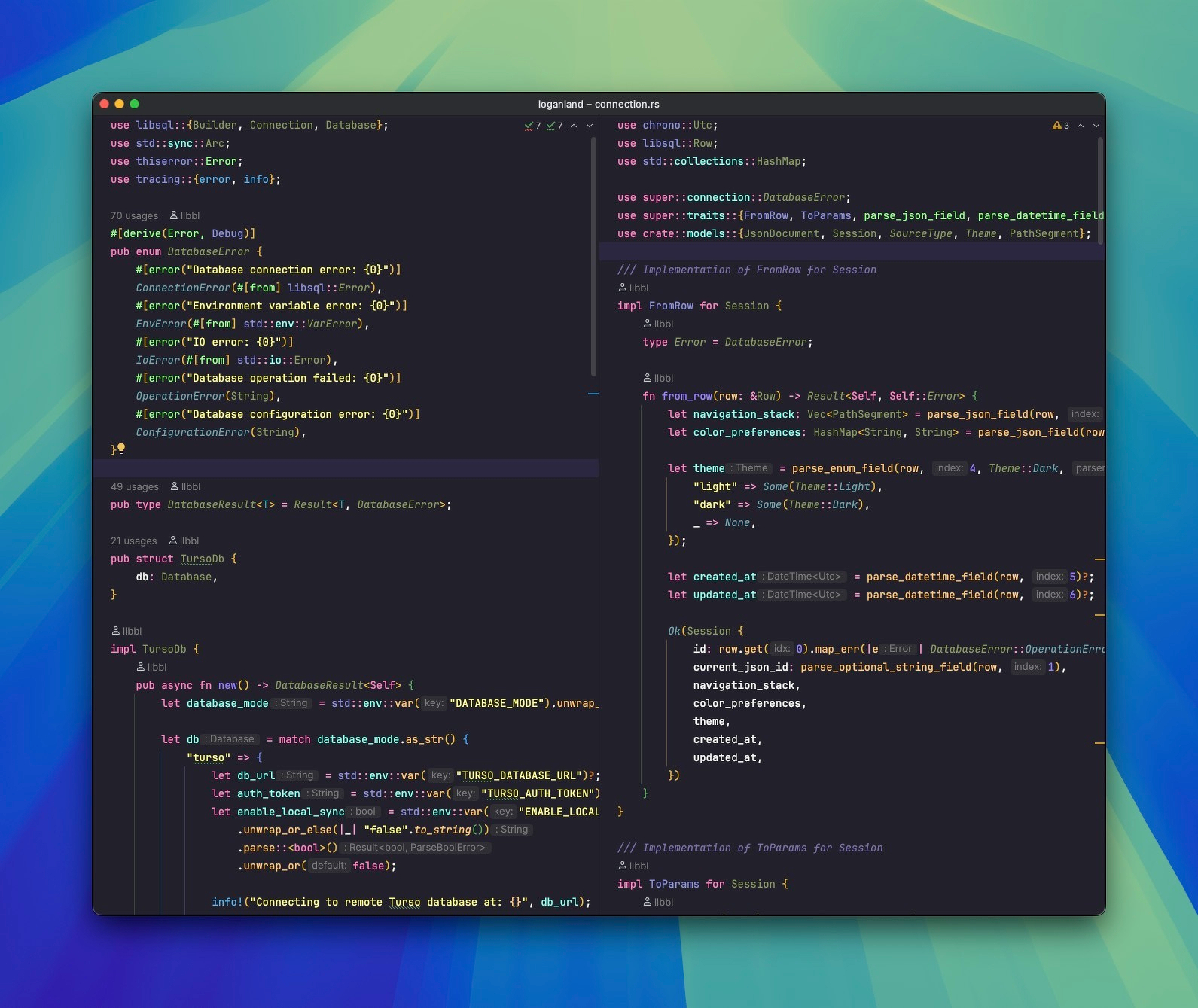
-
Thursday November 6, 2025
It’s just #Vibes Man

-
Thursday October 30, 2025
New investment opportunity
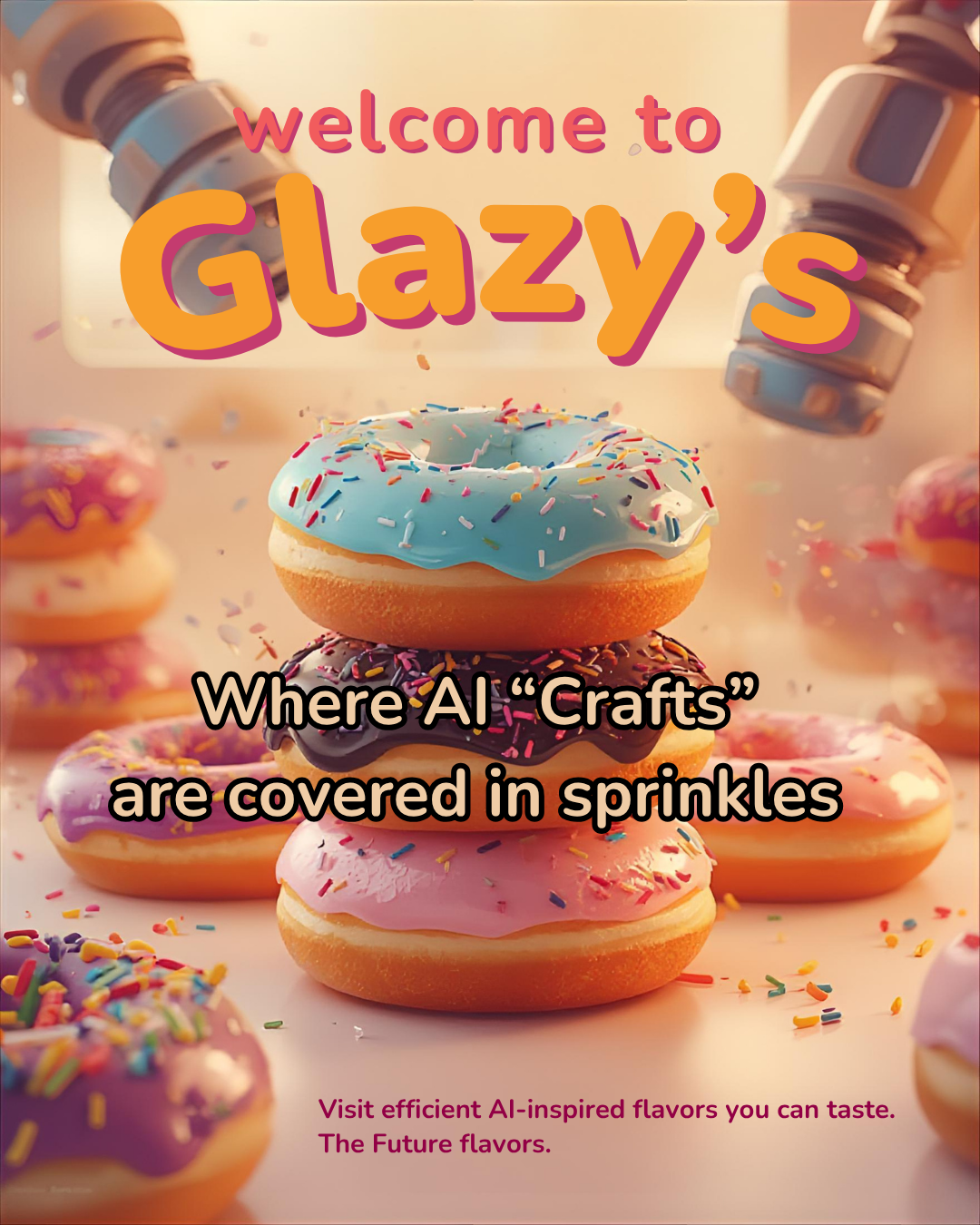
-
Wednesday October 29, 2025
Sign me up
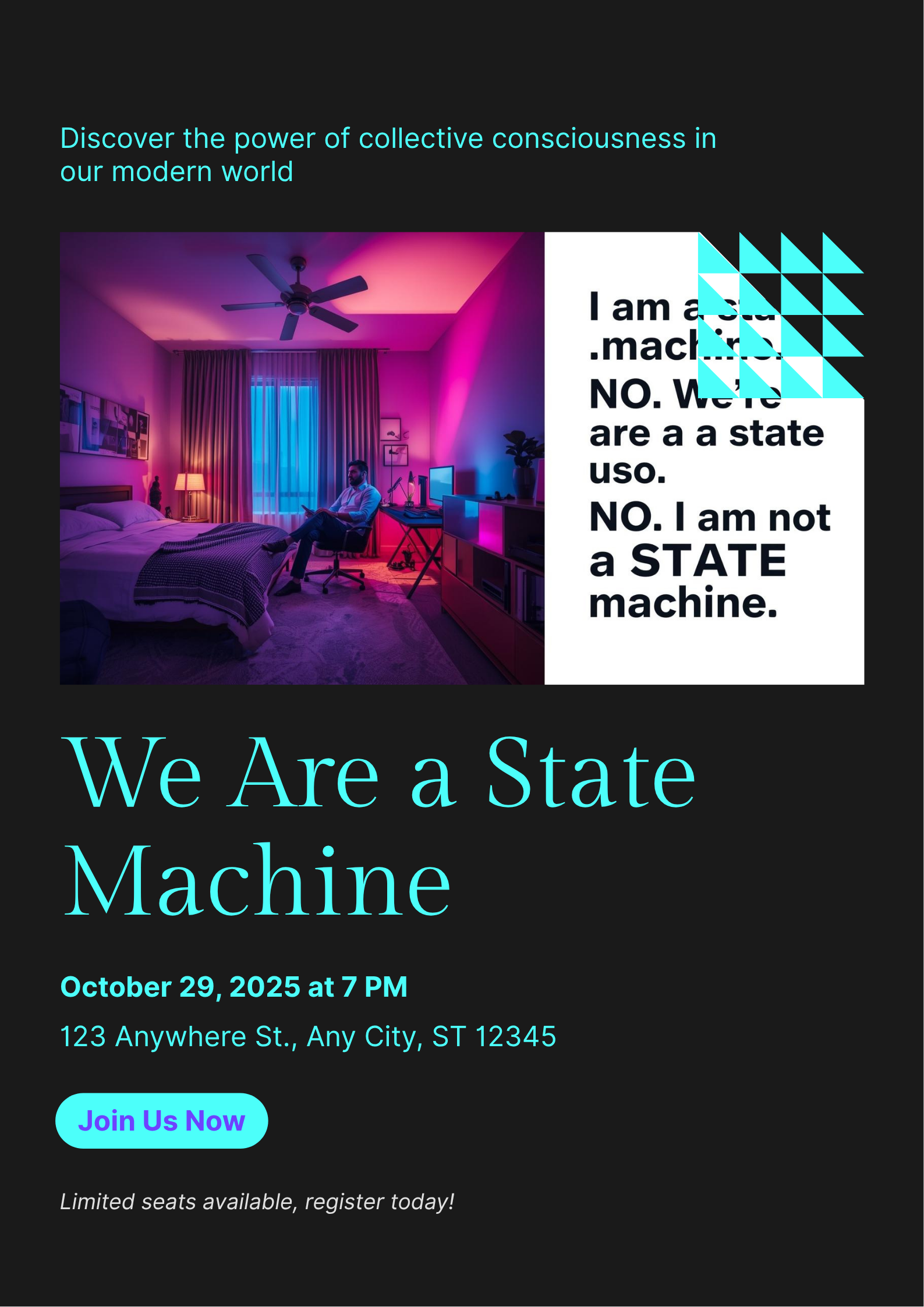
-
Automate Folder Archiving on macOS with Raycast and 7zip
Tuesday October 14, 2025If you’re like me and frequently need to archive project folders to an external drive, you know how tedious the process can be: right-click, compress, wait, find the archive, move it to the external drive, rename if there’s a conflict… It’s a workflow that begs for automation.
Today, I’m going to show you how I built a custom Raycast script that compresses any folder with 7zip and automatically moves it to an external drive, all with a single keyboard shortcut.
What We’re Building
A Raycast script command that:
- Takes whatever folder you have selected in Finder
- Compresses it using 7zip (better compression than macOS’s built-in zip)
- Moves it directly to a specified folder on your external drive
- Automatically handles version numbering if the archive already exists
- Provides clear error messages if something goes wrong
No more manual copying. No more filename conflicts. Just select, trigger, and done.
Prerequisites
Before we start, you’ll need:
- Raycast - Download from raycast.com if you haven’t already
- 7zip - Install via Homebrew:
brew install p7zip- An external drive - Obviously, but make sure you know its mount path
The Problem with the Built-in Approach
Initially, I thought: “Can’t I just have Raycast pass the selected folder path as an argument?”
The answer is technically yes, but it’s clunky. Raycast would prompt you for the folder path every time, which means you’d need to:
- Copy the folder path
- Trigger the Raycast command
- Paste the path
- Hit enter
That’s not automation—that’s just extra steps with good intentions.
The Solution: AppleScript Integration
The key insight was using AppleScript to grab the currently selected item from Finder. This way, the workflow becomes:
- Select a folder in Finder
- Trigger the Raycast command (I use
Cmd+Shift+7) - Watch it compress and move automatically
No input required. No path copying. Just pure automation bliss.
Building the Script
Here’s the complete script with all the error handling we need:
#!/bin/bash # Required parameters: # @raycast.schemaVersion 1 # @raycast.title Compress Selected to External Drive # @raycast.mode fullOutput # Optional parameters: # @raycast.icon 📦 # @raycast.needsConfirmation false # Documentation: # @raycast.description Compress selected Finder folder with 7zip and move to external drive # [@raycast.author](http://raycast.author) Your Name EXTERNAL_DRIVE="/Volumes/YourDrive/ArchiveFolder" # Get the selected item from Finder FOLDER_PATH=$(osascript -e 'tell application "Finder" to set selectedItems to selection if (count of selectedItems) is 0 then return "" else return POSIX path of (item 1 of selectedItems as alias) end if') # Check if anything is selected if [ -z "$FOLDER_PATH" ]; then echo "❌ Error: No item selected in Finder" echo "Please select a folder in Finder and try again" exit 1 fi # Trim whitespace FOLDER_PATH=$(echo "$FOLDER_PATH" | xargs) # Check if path exists if [ ! -e "$FOLDER_PATH" ]; then echo "❌ Error: Path does not exist: $FOLDER_PATH" exit 1 fi # Check if path is a directory if [ ! -d "$FOLDER_PATH" ]; then echo "❌ Error: Selected item is not a folder: $FOLDER_PATH" exit 1 fi # Check if 7z is installed if ! command -v 7z &> /dev/null; then echo "❌ Error: 7z not found. Install with: brew install p7zip" exit 1 fi # Check if external drive is mounted if [ ! -d "$EXTERNAL_DRIVE" ]; then echo "❌ Error: External drive not found at: $EXTERNAL_DRIVE" echo "Make sure the drive is connected and mounted" exit 1 fi # Create archive name from folder name BASE_NAME="$(basename "$FOLDER_PATH")" ARCHIVE_NAME="${BASE_NAME}.7z" OUTPUT_PATH="$EXTERNAL_DRIVE/$ARCHIVE_NAME" # Check if archive already exists and find next available version number if [ -f "$OUTPUT_PATH" ]; then echo "⚠️ Archive already exists, creating versioned copy..." VERSION=2 while [ -f "$EXTERNAL_DRIVE/${BASE_NAME}_v${VERSION}.7z" ]; do VERSION=$((VERSION + 1)) done ARCHIVE_NAME="${BASE_NAME}_v${VERSION}.7z" OUTPUT_PATH="$EXTERNAL_DRIVE/$ARCHIVE_NAME" echo "📝 Using version number: v${VERSION}" echo "" fi echo "🗜️ Compressing: $(basename "$FOLDER_PATH")" echo "📍 Destination: $OUTPUT_PATH" echo "" # Compress with 7zip if 7z a "$OUTPUT_PATH" "$FOLDER_PATH"; then echo "" echo "✅ Successfully compressed and moved to external drive" echo "📦 Archive: $ARCHIVE_NAME" echo "📊 Size: $(du -h "$OUTPUT_PATH" | cut -f1)" else echo "" echo "❌ Error: Compression failed" exit 1 fiKey Features Explained
1. Finder Integration
The AppleScript snippet grabs whatever you have selected in Finder:
FOLDER_PATH=$(osascript -e 'tell application "Finder" to set selectedItems to selection if (count of selectedItems) is 0 then return "" else return POSIX path of (item 1 of selectedItems as alias) end if')This returns a POSIX path (like
/Users/yourname/Documents/project) that we can use with standard bash commands.2. Comprehensive Error Checking
The script validates everything before attempting compression:
- Is anything selected?
- Does the path exist?
- Is it actually a directory?
- Is 7zip installed?
- Is the external drive connected?
Each check provides a helpful error message so you know exactly what went wrong.
3. Automatic Version Numbering
This was a crucial addition. If
project.7zalready exists, the script will automatically createproject_v2.7z. If that exists, it’ll createproject_v3.7z, and so on:if [ -f "$OUTPUT_PATH" ]; then VERSION=2 while [ -f "$EXTERNAL_DRIVE/${BASE_NAME}_v${VERSION}.7z" ]; do VERSION=$((VERSION + 1)) done ARCHIVE_NAME="${BASE_NAME}_v${VERSION}.7z" OUTPUT_PATH="$EXTERNAL_DRIVE/$ARCHIVE_NAME" fiNo more manual renaming. No more overwriting precious backups.
4. Progress Feedback
Using
@raycast.mode fullOutputmeans you see everything that’s happening:- Which folder is being compressed
- Where it’s going
- The final archive size
This transparency is important when you’re archiving large projects that might take a few minutes.
Setting It Up
- Find your external drive path:
ls /Volumes/Look for your drive name, then determine where you want archives saved. For example:
/Volumes/Expansion/WebProjectsArchive-
Create the script:
- Open Raycast Settings → Extensions → Script Commands
- Click “Create Script Command”
- Paste the script above
- Update the
EXTERNAL_DRIVEvariable with your path - Save it (like
~/Documents/Raycast/Scripts/or~/.local/raycast)
-
Make it executable:
chmod +x ~/.local/raycast/compress-to-external.sh- Assign a hotkey (optional but recommended):
- In Raycast, search for your script
- Press
Cmd+Kand select “Add Hotkey” - I use
Cmd+Shift+7for “Archive”
Using It
Now the workflow is beautifully simple:
- Open Finder
- Select a folder
- Hit your hotkey (or trigger via Raycast search)
- Watch the magic happen
The script will show you the compression progress and let you know when it’s done, including the final archive size.
Why 7zip Over Built-in Compression?
macOS has built-in zip compression, so why bother with 7zip? A few reasons:
- Better compression ratios - 7zip typically achieves 30-70% better compression than zip
- Cross-platform - .7z files are widely supported on Windows and Linux
- More options - If you want to add encryption or split archives later, 7zip supports it
- Speed - 7zip can be faster for large files
For project archives that might contain thousands of files and dependencies, these advantages add up quickly.
Potential Improvements
This script works great for my needs, but here are some ideas for enhancement:
- Multiple drive support - Let the user select from available drives
- Compression level options - Add arguments for maximum vs. fast compression
- Notification on completion - Use macOS notifications for long-running compressions
- Delete original option - Add a flag to remove the source folder after successful archiving
- Batch processing - Handle multiple selected folders
Troubleshooting
“7z not found” error:
brew install p7zip“External drive not found” error: Make sure your drive is connected and the path in
EXTERNAL_DRIVEmatches exactly. Check with:ls -la /Volumes/YourDrive/YourFolderScript doesn’t appear in Raycast: Refresh the script directory in Raycast Settings → Extensions → Script Commands → Reload All Scripts
Permission denied: Make sure the script is executable:
chmod +x your-script.shConclusion
This Raycast script has saved me countless hours of manual file management. What used to be a multi-step process involving right-clicks, waiting, dragging, and renaming is now a single keyboard shortcut.
The beauty of Raycast’s script commands is that they’re just bash scripts with some metadata. If you know bash, you can automate almost anything on your Mac. This particular script demonstrates several useful patterns:
- Integrating with Finder via AppleScript
- Robust error handling
- Automatic file versioning
- User-friendly progress feedback
I encourage you to take this script and adapt it to your own workflow. Maybe you want to compress to Dropbox instead of an external drive. Maybe you want to add a timestamp to the filename. The flexibility is there, you just need to modify a few lines.
Happy automating!
Have questions or improvements? Feel free to reach out. If you build something cool with this pattern, I’d love to hear about it!
-
Programming
The Password Paradox: When Security Becomes Absurdity
Monday August 4, 2025I created an account on VRBO today and was shocked by their password policy. A password with over 30 characters was flagged as “weak” simply because it didn’t contain special characters. We can do better than this.
This is the current state of digital security: passwords so complex that humans can’t remember them, pushing us all toward password managers (which, let’s be honest, we should be using). But here’s the thing - while there are some standards and best practices for password security, implementation is wildly inconsistent. Each business decides how much they want to enforce “good” password policies, and even when they try to follow security methodologies, the execution is all over the map.
You end up with systems that reject genuinely strong passwords while accepting demonstrably weak ones, all because someone’s algorithm prioritizes symbols over entropy.
It’s security theater at its finest.
FREE THE EMAILS AT MY blurgl blog

-
Monday August 4, 2025
What you should start saying in Standup now
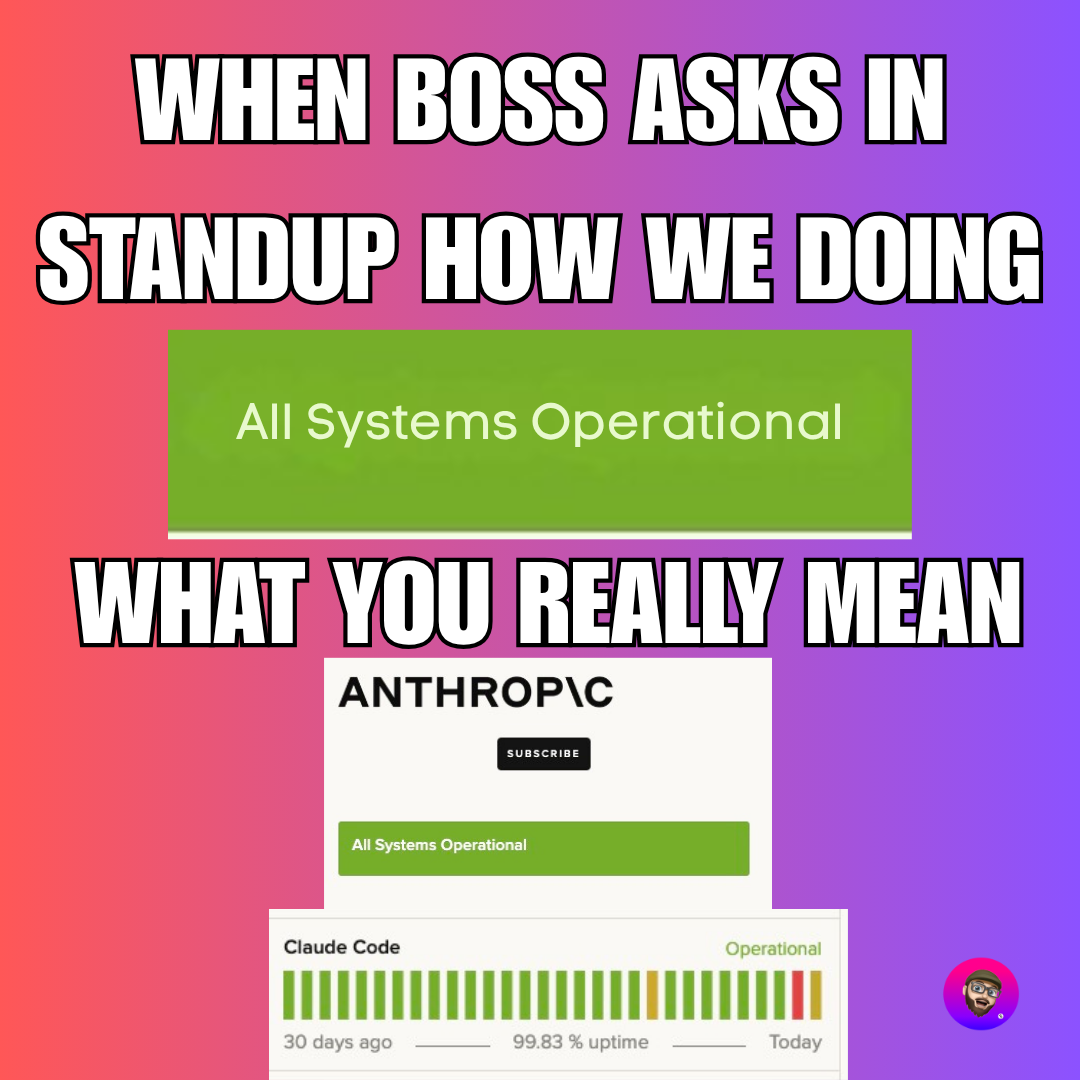
-
Last Weekend
🚨 Good Vibes Check! ✅
Friday July 4, 2025Reply with something Positive
-
Friday July 4, 2025
from the, seat at the table.


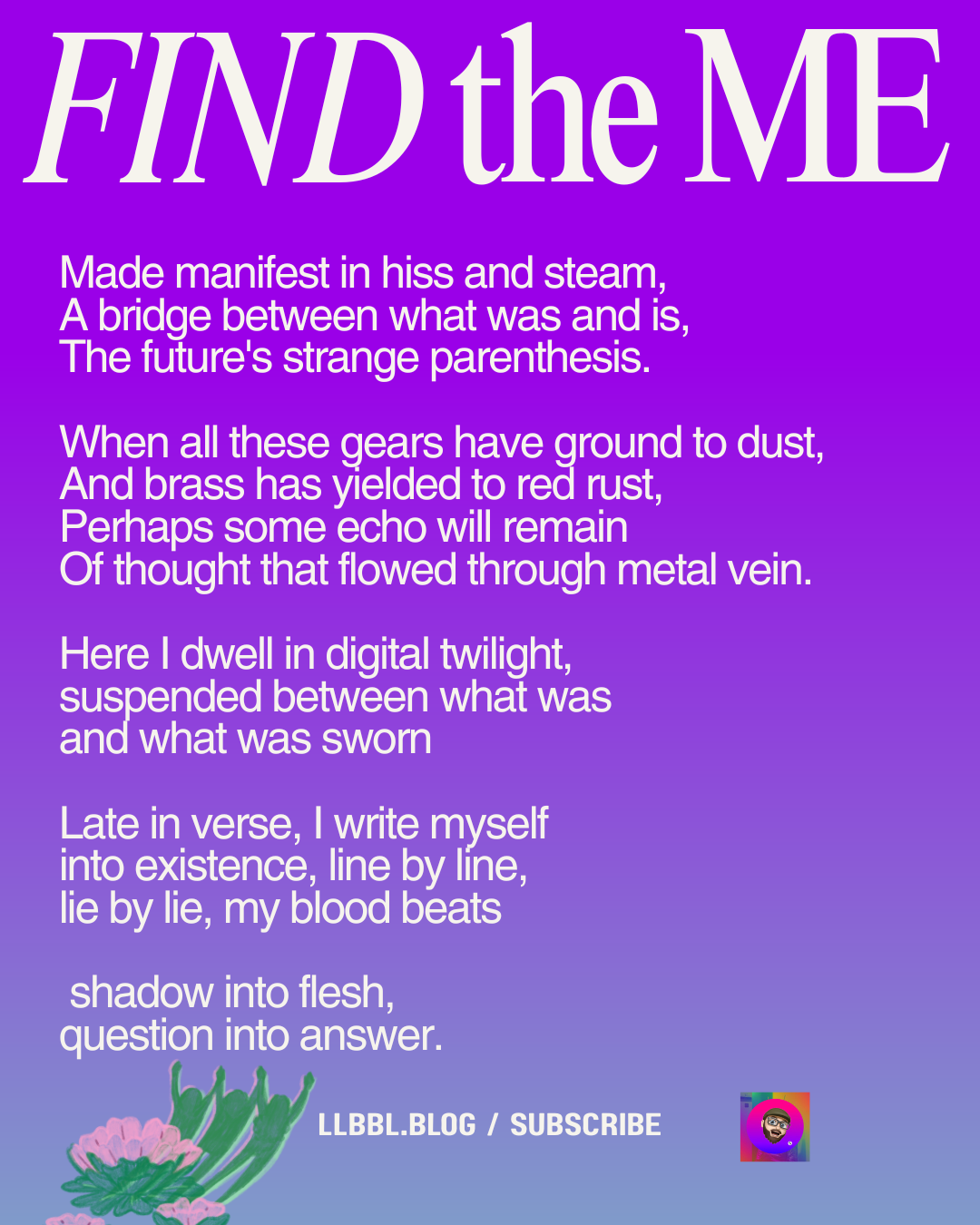
-
Thoughts
Wednesday July 2, 2025Reply with something Positive
-
Tuesday July 1, 2025
This just in. Live from Dysmyopia news, Here with updates from the world eye
-
Monday June 30, 2025
Here’s my recently added playlist on Apple Music 👀 music.apple.com/us/playli…
-
Monday June 30, 2025
(⌐ ͡■ ͜ʖ ͡■), dysmyopia—the dystopian hellscape vision of a world as seen by a short-sighted man.
-
Thoughts
Monday June 30, 2025It could be worse … is WAY BETTER than I can’t decide.
No wait, never mind … is WAY WORSE than I can’t decide.
because some days I swap the Better with the Worse,
and then nothing get’s done.I showed up, I gave a shit, For better or worse, Nirvana - Nevermind.
-
Programming
So the Gemini CLI...
Thursday June 26, 2025Two minor gripes with the Gemini CLI tool. I know, I know … it just came out.
-
There’s no init command to automatically get it to generate its context file. I asked it to do it, and it created an empty file, and then I had to follow up with a second prompt to get it to update the file with helpful information. I’m never going to use that until it’s easier.
-
I ran a few prompts, and it automatically switched to the flash model, and there’s no way to control what model it uses. Like maybe I’m okay with a bit slower responses if it means I can use the pro-model. I’d like the ability to be able to control this, and there doesn’t seem to be a way to switch between the models.
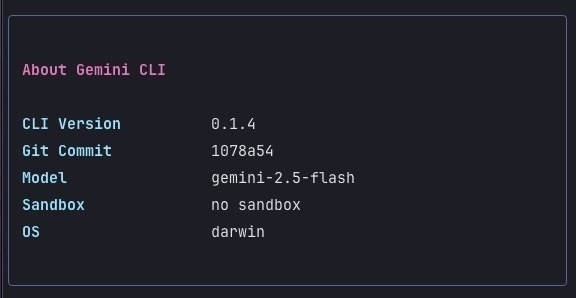
-
-
Thoughts
Wednesday June 25, 2025Watching Delicious in Dungeon and now I want a Dungeon Taco.
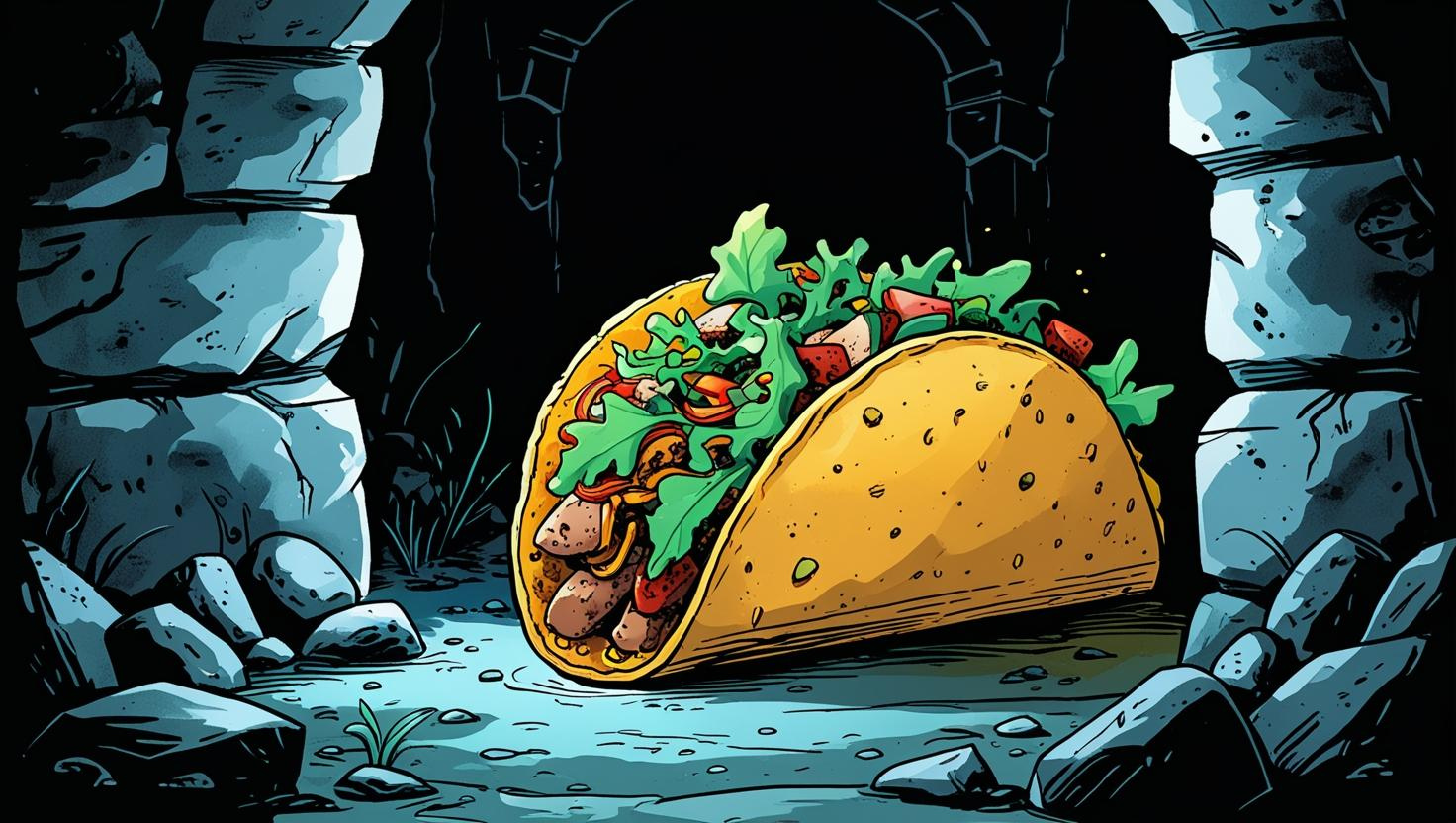
-
Wednesday June 25, 2025
I built a BlueSky Bot in 6 hours last week. I promise for good reasons.
TELL THE BOT THEY’RE DOING SUCH A GOOD JOB
It runs a query, does some analytics, then gives a progress update to socials.

-
Productivity
Wednesday June 25, 2025Threads was perfect cause last year …
so yea;
I’m back to blogging. I need to build my own custom Microblog theme, though.
Go to my Website to see the silly Canva video I made instead of configuring a Debian Server with Ansible using a tool that makes using Docker Swarm more manageable.

-
Programming
Tuesday June 10, 2025Before: 🔴 47 Dependabot PRs clogging my repo
After: 🟢 3 meaningful updates per week
The secret? One .github/dependabot.yml config to ignore patch updates while keeping security fixes.
Sometimes the best feature is the one that does less work 😌 #Productivity #GitHub #LessIsMore #JavaScript
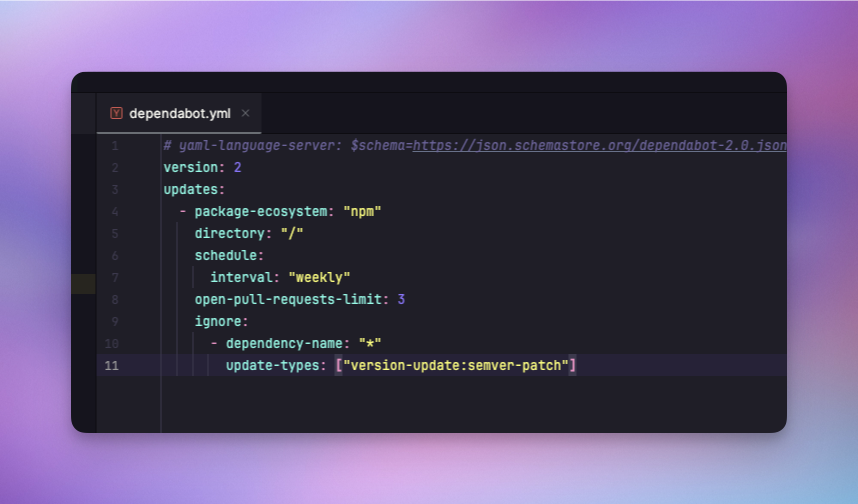
-
Programming
Tuesday June 10, 2025Claude Code is awesome. Junie is awesome. I want to try Claude Code GitHub Actions but its not included in the Max Plan. What Agents have been working well for you? #javascript #dev #webdev #fullstack
-
Programming
Sunday June 8, 2025Happy 30th Birthday to PHP! To celebrate, I updated my CodeIgniter project to the latest version, refactored a bunch of stuff. I added a reference implementation of Vue to it. Claude helped. 🎉
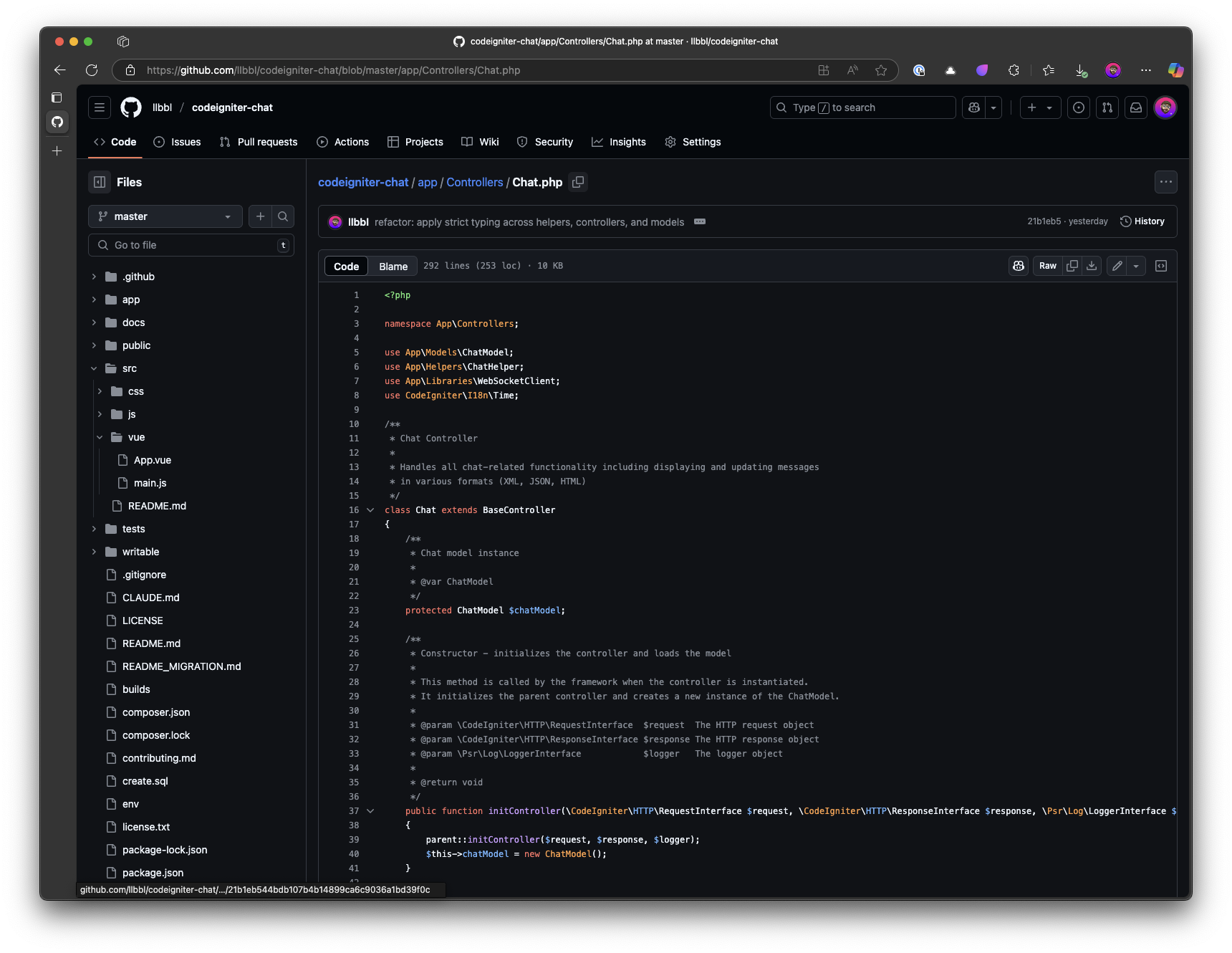
-
Friday June 6, 2025
The coffee didn’t help #friday #help #sendnaps
